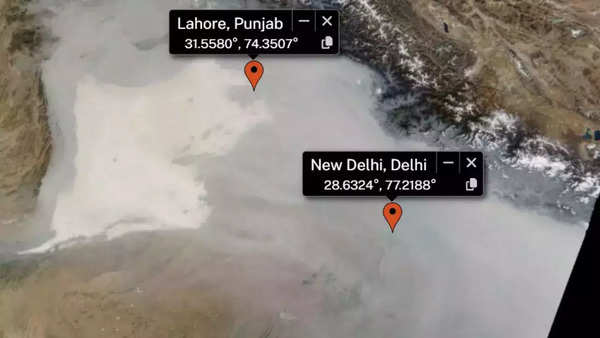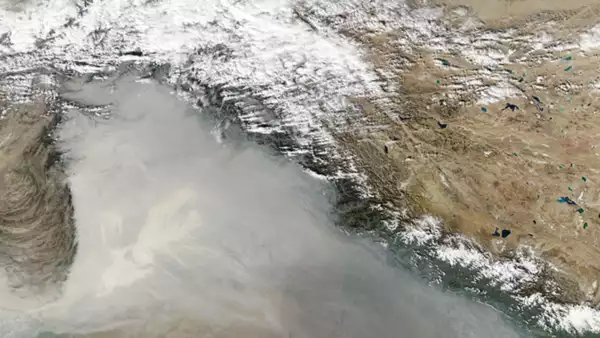Lahore, the city with over 14 million people surrounded by industrial factories, has hit record pollution levels this month. The toxic smog affecting Lahore and other parts of Pakistan has worsened, with more than 15,000 cases of respiratory and viral infections reported in a single day, Ary News reported on Thursday.
According to Swiss group IQAir, Lahore’s pollution index reached a staggering 1165, while New Delhi and surrounding areas hovered around 350.
Hospitals in Lahore are experiencing an influx of patients presenting symptoms including dry cough, respiratory distress, pneumonia, and chest infections.

The primary government healthcare facilities have recorded substantial patient numbers: Mayo Hospital attended to over 4,000 individuals, Jinnah Hospital treated 3,500 patients, Gangaram Hospital received 3,000 cases, and Children’s Hospital managed more than 2,000 patients.
Surge in various ailments in Pakistan
Healthcare professionals in Pakistan have highlighted the increased risk to children and individuals with underlying conditions such as asthma and cardiac ailments, Ary News reported.
The atmospheric pollution has triggered a surge in various ailments, including pneumonia, chest infections, and dermatological conditions.
The World Health Organization (WHO) warns that air pollution can lead to strokes, heart disease, lung cancer, and respiratory issues. Children, babies, and the elderly are especially vulnerable to these health risks.
PM2.5, the fine particulate matter that poses the greatest danger, is the chief pollutant in Lahore’s air. It originates from fossil fuel combustion, dust storms, and wildfires, and has been linked to asthma, heart and lung disease, cancer, and cognitive impairment in children.
Comprehensive measures to address the issue
Pakistani authorities are implementing comprehensive measures to address this environmental crisis. According to Pakistani media outlets, the Punjab Provincial Disaster Management Authority of Pakistan officially classified smog as a “calamity” and implemented emergency protocols.
The pollution, mainly caused by industrial emissions, vehicle exhaust, and agricultural stubble burning, has triggered health emergencies. As a result, schools have been closed, outdoor activities banned, and significant health concerns are mounting. The hazardous air poses serious risks, especially to children, the elderly, and those with respiratory conditions.
Also read: Pakistan restricts outdoor activities, market hours to curb air pollution-related illness
The government’s response includes a three-month ban on wedding celebrations and new transport department regulations to combat smog across the province. Additionally, the Pakistan Punjab administration has suspended educational activities in schools and colleges.
In Multan, located about 350 kilometres from Lahore, the AQI reached an even more alarming 2,000. In response, authorities have banned access to parks, zoos, and other public spaces, along with polluting tuk-tuks and restaurants using unfiltered barbecues.
Thick blanket of sky-soiling smog

The extensive smog covering northern Pakistan has been documented by NASA’s Moderate Resolution Imaging Spectroradiometer (MODIS).
“A thick blanket of sky-soiling smog hung over northern Pakistan in early November 2024, causing air quality to plummet, schools to close, and sending hundreds of people to the hospital”, NASA MODIS said.
“On November 12, the Punjab government website advised that the AQI for the province over the last 24 hours had averaged 604-well into the Hazardous range”, it added.
NASA MODIS described the severe pollution, stating that, “The tan haze is so thick that it completely obscures the landscape of Pakistan from view. Irregular patches of a lighter color indicate that fog hugs the ground underneath the haze. The city of Lahore, Pakistan–which has ranked as the most polluted city in the world in recent days–is located near the northeastern edge of the fog”.
